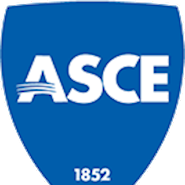ASCE has honored Performance-Based Wind Design as the 2024 recipient of the ASCE Charles Pankow Award for Innovation. This includes its first application and ranges to the ASCE/SEI Prestandard for Performance-Based Wind Design and all collaborators as leading developers of this breakthrough technology.
The new and transformative methodology of Performance-Based Wind Design (PBWD) was implemented for the first time with the construction of 321 West 6th Street in Austin, Texas, a 58-story, 671-foot-tall mixed-use tower designed, reviewed, and permitted utilizing this innovative approach. With wind tunnel load predictions higher than code estimates, Magnusson Klemencic Associates (MKA) turned to PBWD, which minimized the impact of the high wind response and offered the following benefits:
- Less structural material than a conventional design.
- Reduced concrete volume in core shear walls by 1,800 yd³.
- Removed 6 inches from the core wall’s 3-foot thickness (which trimmed building’s footprint by 1 foot on all sides).
- Reduced reinforcing steel by 350 tons (10% of total).
- Reduced embedded steel beams in the core by 125 tons (250% of total) – by comparison, the steel beam code design is 175 tons and Austin used only 50 tons.
- Poised to shorten construction schedule (once complete).
- Offers more reliable performance in a wind event.
While the proof-of-concept Austin tower was conservative in its use of PBWD given its first-time, real-world application, the project still saw reduced costs in the reinforced concrete structure by 5% and reduced embodied carbon by 6%, compared with a conventional design – these reductions will only be improved as this methodology gains traction.
The tower’s design followed the Prestandard for PBWD developed by the Structural Engineering Institute of the American Society of Civil Engineers, which presents a recommended alternative to the prescriptive procedures for wind design of buildings contained in the nationally adopted standard Minimum Design Loads and Associated Criteria for Buildings and Other Structures (ASCE 7) and in the International Building Code (IBC). The approach relies upon a detailed evaluation of specific performance objectives including occupant comfort, serviceability, and safety, to right-fit a tower’s design.
While prescriptive wind requirements rely on linear analysis to assess elastic “bounce-back” behavior, PBWD uses nonlinear response-history analysis to assess inelastic behavior applying actual dynamic wind loads versus static loads to a numerical building model.
Major innovations introduced with this methodology include:
- Nonlinear dynamic analysis for wind design.
- Limited inelasticity in the Main Wind Force Resisting System elements.
- System-based performance criteria.
Implementing PBWD in Austin’s 321 West 6th Street tower involved years of research and collaboration with industry partners, the client team, architect, building department, and peer review team. MKA engaged a committee of peer reviewers from June 10, 2021, to January 7, 2022, to collaborate and engage in the design process.
Peer reviewers for the Austin project met four times during the design phase to review the basis of design; wind tunnel testing and wind loading recommendations; initial proportioning, computer modeling, and initial design; and inelastic modeling and design.
Collaboration between the design and peer review teams was also furthered by regular check-ins with the city to ensure the city’s structural reviewers had a comfortable level of understanding for the new process as it was delivered. In total, the review efforts lasted seven months.
Further demonstration of the intense collaboration required for this project can be seen in the required wind tunnel tests (more in-depth than typical tests) to give design engineers more specific wind force data.
The ASCE Charles Pankow Award for Innovation was established by the Civil Engineering Research Foundation (CERF) in 1996. Named for industry visionary Charles J. Pankow, the award recognizes the contributions of organizations working collaboratively to advance the design and construction industry by introducing innovation into practice. It was instituted as a Society award on December 17, 2008.



